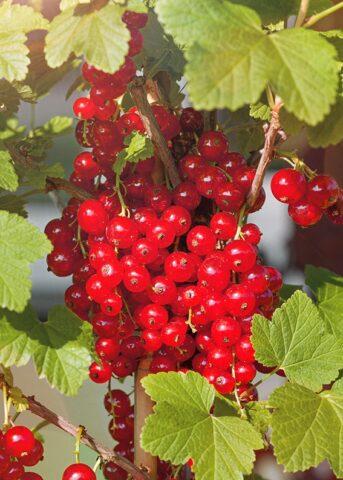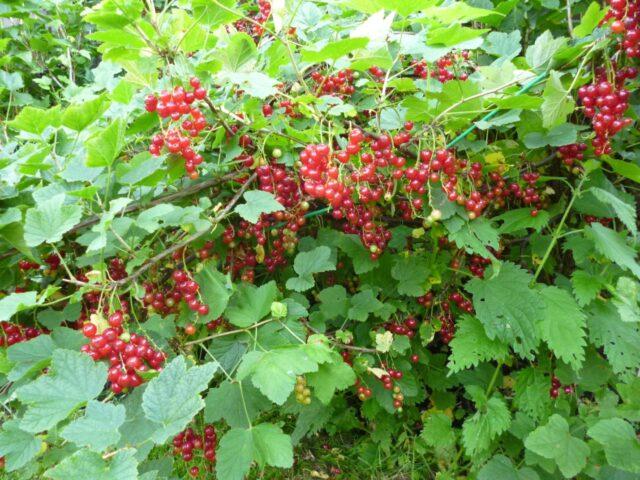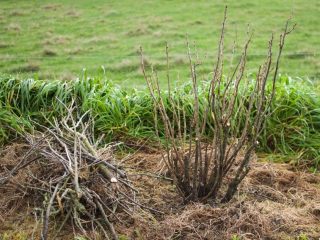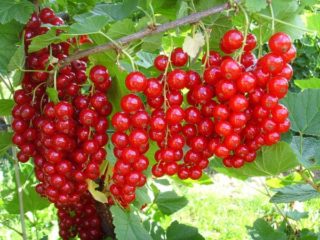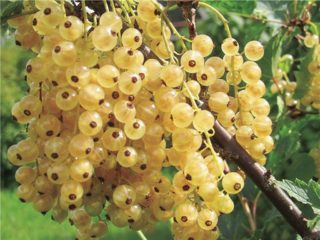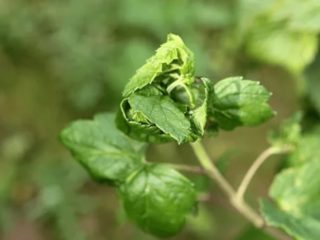Content
Radiant red currant (Ribes Rubrum Luchezarnaya) is considered one of the best domestic varieties of culture. The variety shows high yields, excellent frost resistance and good resistance to fungal diseases. The fruits of red currant are rich in vitamins and nutrients, and are universal in use.

Red currant "Radiant" is allowed to grow in the northern regions of Russia
Breeding history
The "Radiant" red currant seedling was bred in the South Ural Research Institute. It was obtained by free pollination of the Faya plodorodnaya variety. It has been under state variety testing since 1990.
Description of the red currant variety Radiant
Red currants of this variety are recommended to be planted in the Ural, West and East Siberian regions; it can also be cultivated in the middle lane and other districts of Russia. The plant has a beautiful shape, does not lose its decorative effect throughout the season. According to gardeners, the culture is unpretentious in growing, caring for it does not take much time. The bushes are slightly spreading, compact. Shoots of medium size, slightly curved. Brushes are long, covered with large, weighing up to one and a half grams of red fruits, rounded. One brush can grow up to 15 berries with juicy pulp, which have a dessert taste, sweet with a slight sourness. Purpose - universal, can be used both fresh and for processing. Most often, delicious compotes, fruit drinks and preserves are prepared from it, added to the fillings for pies. The variety is characterized by dry separation of fruits, a high content of vitamins C, K, B9 - 36, 11, 8 mg. The berry is not prone to shedding; when ripe, it can hang on the brushes for up to three weeks. It is not necessary to harvest immediately after reddening. The bushes of this variety are covered with small to medium-sized green leaves with a matte, wrinkled plate. The denticles are obtuse and short.
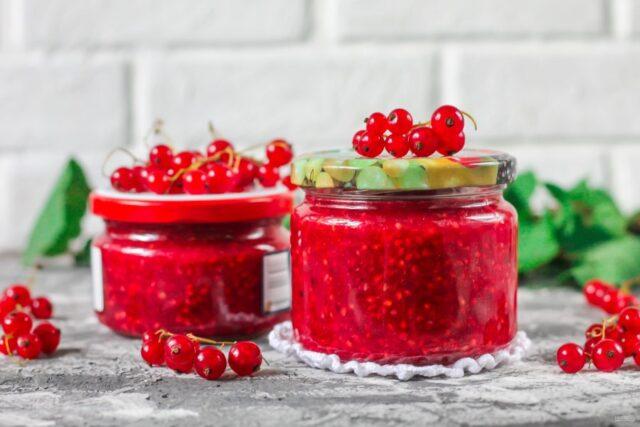
The variety shows the best yield results in sunny areas.
Characteristics
The variety has excellent characteristics and taste. Red currant bushes "Radiant" are resistant to drought and severe frosts, rarely exposed to fungal diseases and insect infestations, and have a high yield. Perennial shrub, self-pollinated. The ripening time of berries is influenced by climatic and weather conditions.
Drought tolerance, winter hardiness
Currant "Radiant", like other varieties of culture, belongs to mesophytes. Due to the high saturation of the top layer of the earth with active roots, it tolerates drought well. In addition, it has increased resistance to winter and adverse weather conditions. Flowers do not pay "attention" to late spring frosts, return cold does not negatively affect the harvest. Frost resistance zone 4.

With proper pruning, the "Radiant" variety is better than others resistant to recurrent frost
Pollination, flowering period and ripening times
"Radiant" is a self-pollinated variety of red currant, bisexual. Bushes bloom closer to June, but this factor is strongly influenced by weather conditions and the region in which the crop is grown. The first berries usually begin to ripen in July, towards the end of the second half. In Siberia, harvesting is carried out at the end of July - August, depending on the average monthly temperature and the number of sunny days. Therefore, the ripeness of the currant is judged visually. It is better to harvest the berries not immediately, but a week after full ripening.
Productivity and fruiting
Red currant "Radiant" is a medium-late ripening variety. The crop is self-fertile, brings a very good harvest - up to 9 kg per bush and up to 2 kg per square meter. Berries with a dry separation, rounded, large, weighing from 0.6 to 1.4 g. The highest rates are in the shoots of six and seven years of age.
Disease and pest resistance
Red currant "Radiant" has a strong immunity to many common diseases among the culture. Resists powdery mildew, rarely anthracnose. Not afraid of such pests as moth and sawfly.
Cases of damage to the bushes of the "Radiant" variety by terry and rust have been recorded; white spot may very rarely appear.
Insects that threaten berry planting include:
- aphid;
- spider mite;
- weevil;
- glass case.
Advantages and disadvantages
The "Radiant" variety is one of the ten best varieties of red currant. It has a number of advantages.
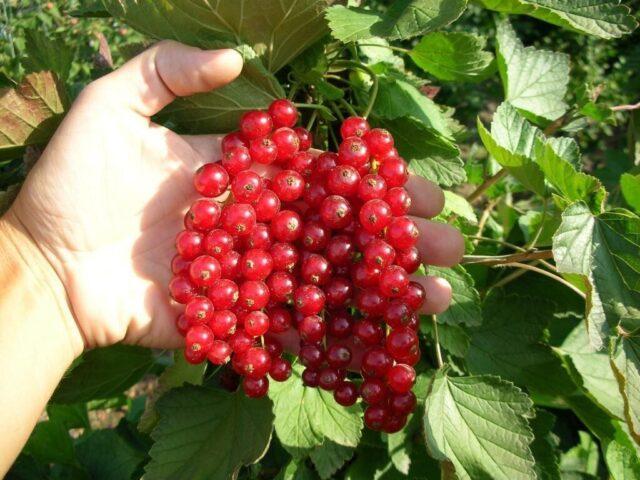
The best currant "Radiant" bears fruit in the sixth-eighth year of life
Advantages:
- bountiful harvest;
- large fruits;
- high resistance to frost;
- excellent taste;
- immunity to fungal diseases.
Disadvantages:
- medium resistance to anthracnose.
Features of planting and care
It is better to propagate "Radiant" currants by cuttings, which should be planted in a planting hole at an angle of 60 degrees. Before planting, it is advisable to keep the seedlings in water for a couple of hours. Since red currants are a light-loving plant, a sunny, ventilated place should be chosen for it. The soil should be slightly acidic or neutral. Ideally, if it is loam, soil from a forest with a high humus content, or black soil. After planting, currant seedlings "Radiant" are watered and mulched, the earth around is well compacted. The aerial part of the sprout is shortened into four buds.
Throughout the life of the bush, elementary care should be carried out for it, in time to carry out:
- watering;
- loosening;
- pruning;
- make top dressing.
Currants are watered as the earth dries, weeding and loosening are carried out after moistening. For proper plant formation, old, damaged and excess branches should be cut off, leaving strong and promising branches. By the fifth year on a bush of red currant "Radiant" there should be no more than 20 skeletal branches. The culture is fed three times per season:
- In the spring - with urea (20 g per bush).
- At the time of flowering - bird droppings (1:15) or mullein (1: 8).
- After harvest - potassium and phosphorus.
Foliar dressing with microelements gives a great effect. Spraying with zinc sulfate, potassium permanganate, ammonium molybdenum (2 g per 8 l of water) will help to increase the yield and size of berries.
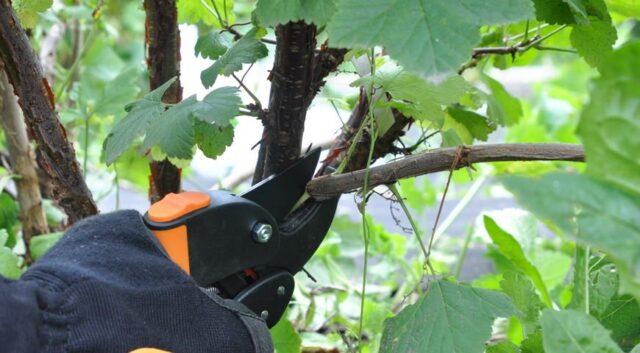
If you do not prune the bush, then the risk of freezing will increase.
Conclusion
Red currant "Radiant" is an excellent variety that gives a high yield, has tasty and large berries, universal in use. Compotes, jams and tinctures are prepared from the fruits, they are used both fresh and after freezing.Following agrotechnical recommendations, with timely and proper care, the variety will bring a good harvest and allow you to get vitamins from the fruit throughout the year.

